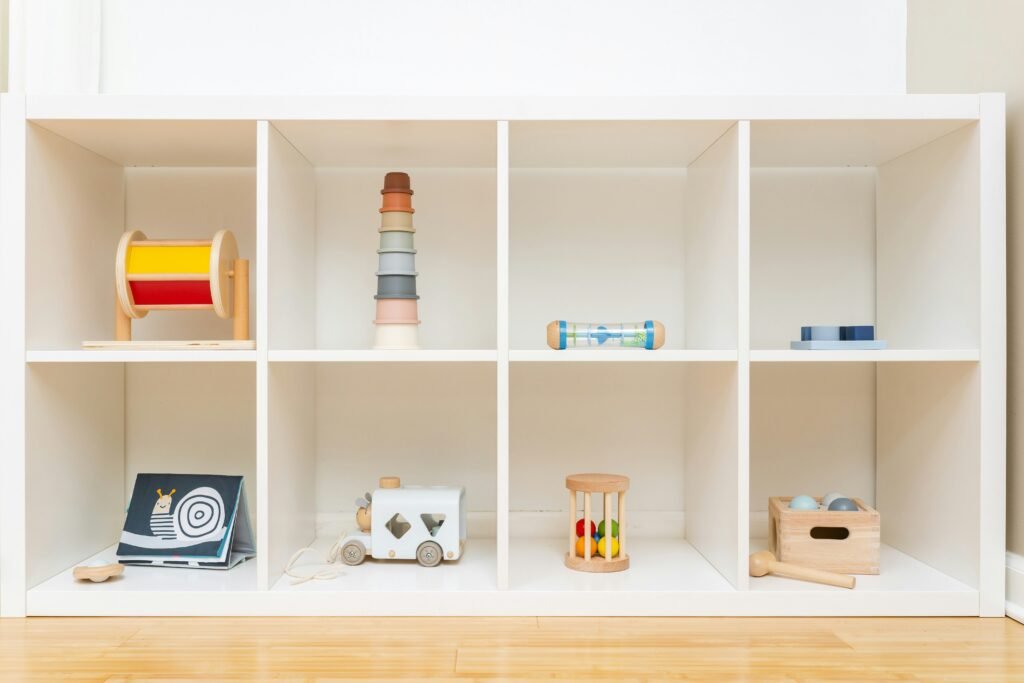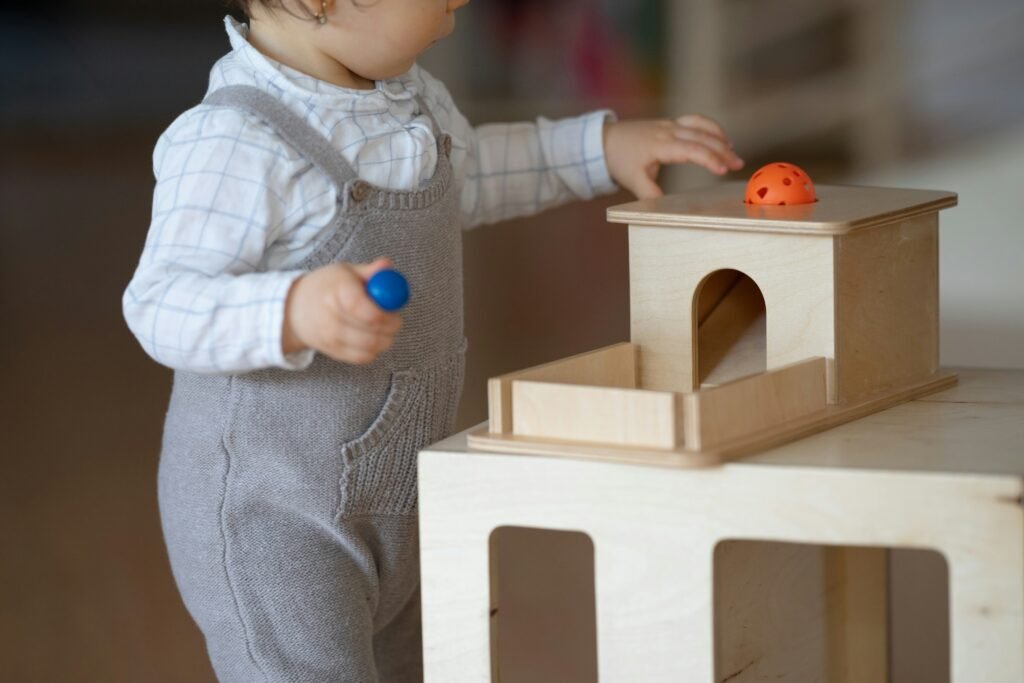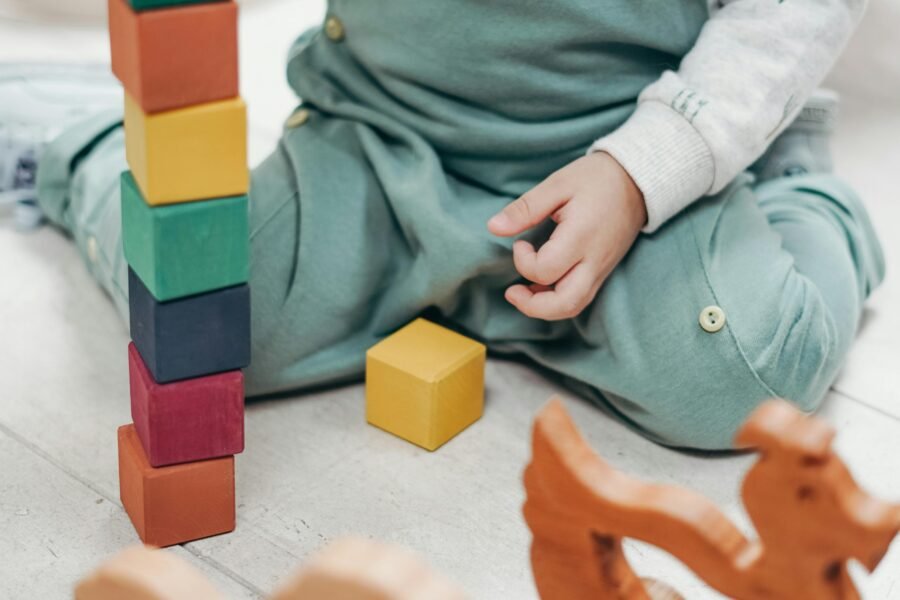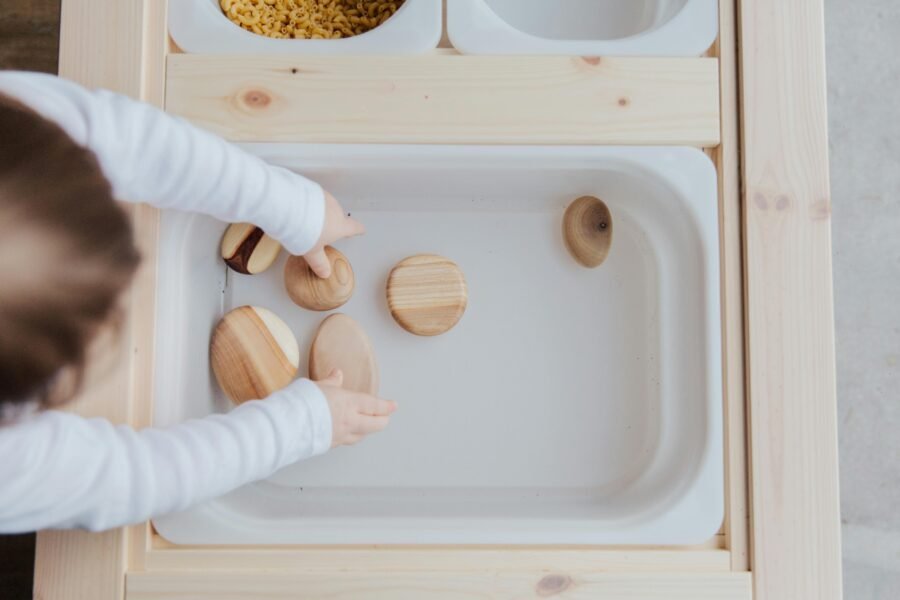As an occupational therapist, I have seen all types of play spaces for kids — cluttered, minimal, noisy, loud, overly stimulating, or simply just not the right fit. Creating a functional play space for your little one isn’t just about throwing some fun toys into a room. It’s about designing a space that emphasizes function, independence and creativity while catering to your child’s developmental needs. Here are the five key considerations for designing the perfect play space.
1. Make it accessible — Creating a sense of independence in your child starts early. You will be surprised at how independent and self-sufficient your child can be if given the right tools and space. The very first step to making this happen is ensuring your child’s safety in the space so they can explore independently with minimal risk. For example, keep toys, activities, and books at your child’s height and reach so they can safely access their belongings. This can easily be done using low shelves, open bins, and easy-to-reach storage. This will foster much more independence and support skills, such as tidying up!

2. Use welcoming visual prompts — A play space doesn’t need to look overly tidy or complete. Instead, set up activities to invite and prompt engagement! For example, leaving a book open to a fun page or leaving a wooden animal puzzle incomplete or an incomplete zipper activity. These visual prompts can encourage your child to dive into play and exploration.
3. Prioritize function — Your child’s play space should fit your family’s lifestyle. It doesn’t always have to be a whole separate room, but may be far more practical when it’s integrated into high-traffic living space, such as the family room, living room, or kitchen. I recommend setting your play space up where your family spends the most time. This way, you can multitask like working or cooking dinner, while still being present in the room while your child plays. The goal is to create a convenient and well-integrated space that works with your family’s daily routine.
4. Make it age-appropriate — Think of the Goldilocks Principle — activities should be just right, not too easy or too challenging. There is a middle ground that offers just the right amount of difficulty and ease where your child can feel challenged and successful. This will really depend on the age, skill level, and interests your child has! Luckily, many activities can be used in various developmental stages based on how they are used.

5. Space for movement — While activities and toys on shelves support fine motor development, and sensory play, don’t forget to include space for gross motor development too! It is important to support your child’s vestibular system* and proprioceptive system* through larger movements, such as jumping, climbing, and stepping. For example, include elements like stepping stones, foam climbing structures, or wooden rockers. Make it safe by utilizing soft play mats and supervising your child. Meeting all your child’s sensory needs through movement can support self-regulation* and helps them understand their body and space.
By focusing on these five elements, your play space can support valuable learning, independence, and creativity. Consider doing a “playroom edit” to see if your space meets these criteria!
*Definitions:
- Vestibular system: Allows you to detect your positioning and movements of your head in space.
- Proprioceptive system: Allows your body to understand its movement and location in space.
- Self-regulation: Ability to identify, understand and manage your own emotions, thoughts, and behaviours.



Leave a Reply